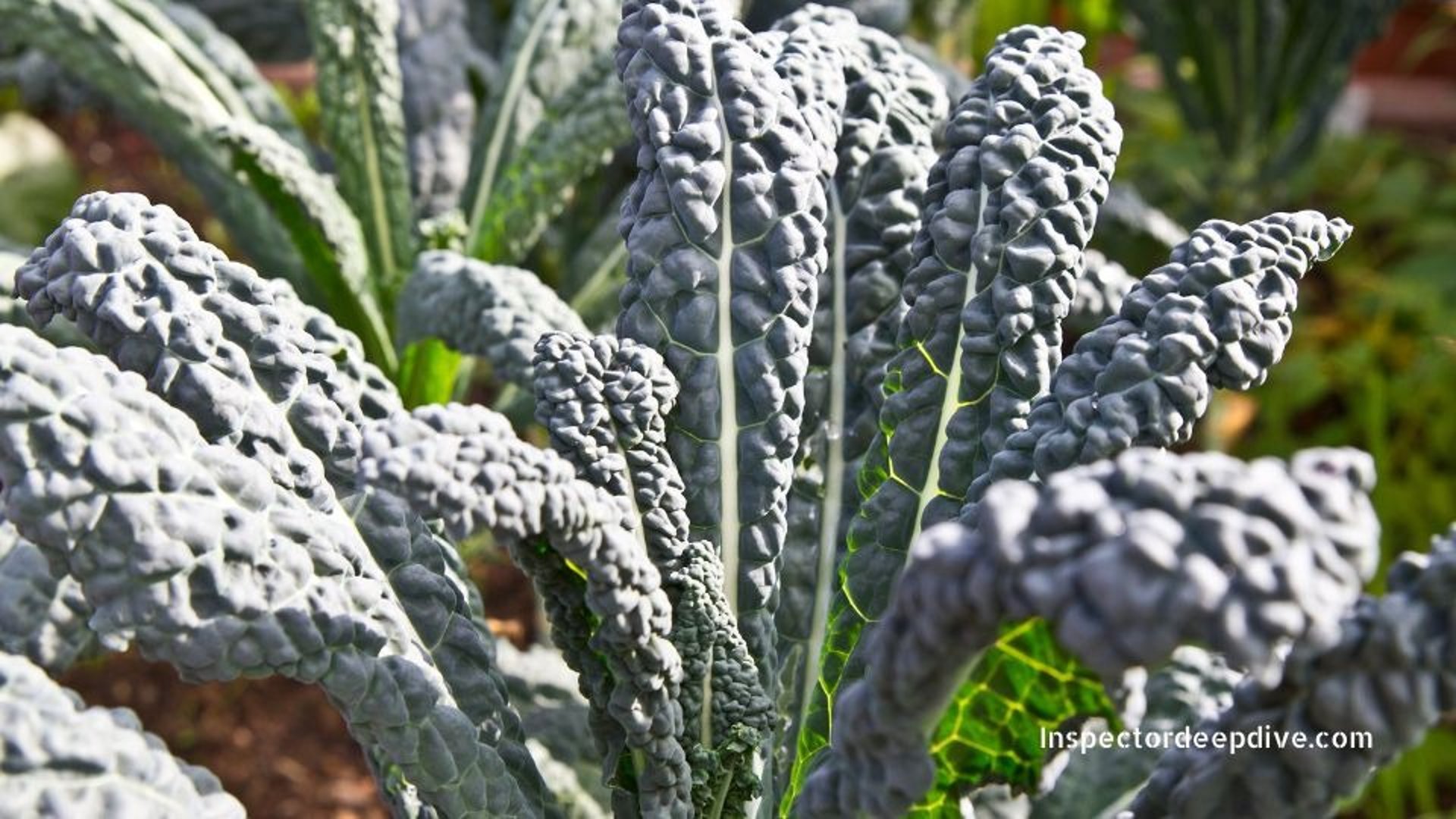
Kale: The Ultimate Leafy Green for Health and Vitality

Kale: The Ultimate Leafy Green for Health and Vitality
If food were superheroes, kale would be the caped crusader of the vegetable world. Packed with nutrients, health benefits, and culinary versatility, this leafy green has earned its spot as one of the most celebrated superfoods on the planet. In this article, we’ll explore what kale is, where it comes from, its varieties, nutritional breakdown, health benefits, potential risks, and the best ways to enjoy it.
What Exactly Is Kale?
Kale (Brassica oleracea var. sabellica) is a member of the cruciferous family, alongside broccoli, cauliflower, and cabbage. Known for its bold, slightly bitter flavor and hardy leaves, it’s been fueling human diets for thousands of years. Originating from the eastern Mediterranean and Asia Minor, kale has been cultivated for over 2,000 years. In recent decades, it has skyrocketed in popularity thanks to its reputation as a nutrient powerhouse.
Tip: If you find raw kale too tough, try massaging it with olive oil or lemon juice it softens the texture and brings out the flavor.
The Many Faces of Kale
Not all kale looks or tastes the same. The most common varieties include:
Curly Kale: The classic, frilly leaves you see in most grocery stores.
Lacinato Kale (Dinosaur Kale): Dark, flat leaves with a sweeter, less bitter flavor.
Red Russian Kale: Tender leaves with a reddish-purple stem, great for salads.
Ornamental Kale: Often used for decoration but still edible.
Each type offers slightly different flavors and textures, giving you plenty of options in the kitchen.
Nutritional Breakdown per 50 g (approx)
Vitamins
Vitamin A: 4,750 IU supports vision and immunity
Vitamin C: 45 mg boosts immunity and aids collagen production
Vitamin K: 200 µg essential for bone health and clotting
Minerals
Potassium: 240 mg supports heart health
Calcium: 80 mg supports strong bones and teeth
Iron: 1 mg aids oxygen transport
Magnesium: 18 mg supports energy and muscle function
Macronutrients
Calories: 28 kcal
Protein: 2 g
Fiber: 2 g
Kale contains more nutrients per calorie than almost any other food on earth.
Health Benefits Backed by Science
Kale isn’t just trendy it’s scientifically proven to support health in multiple ways:
Heart Health: Fiber and antioxidants help reduce cholesterol and inflammation.
Anti-Inflammatory: Flavonoids and omega-3 fatty acids reduce inflammation.
Antioxidant Defense: Compounds like quercetin protect cells from damage.
Cancer Prevention: Glucosinolates may lower the risk of breast and colon cancer.
Weight Management: Low-calorie, high-fiber content keeps you full longer.
As nutritionist Dr. Joel Fuhrman puts it: “Kale is the king of leafy greens. It’s nutrient-dense, calorie-light, and loaded with compounds that protect against disease.”
Risks and Who Should Be Cautious
While kale is generally safe and beneficial, some people need to be mindful:
Kidney Stones: Kale contains oxalates, which can contribute to stone formation.
Thyroid Conditions: Excessive intake may interfere with thyroid function.
Blood Thinners: High vitamin K can affect medications like warfarin.
Tip: Moderation is key balance kale with a variety of other greens.
Environmental Footprint
Kale is relatively eco-friendly, requiring minimal pesticides and thriving in cooler climates. However, large-scale farming can lead to soil depletion if not managed sustainably. Choosing organic or locally grown kale helps reduce the environmental impact.
Best Ways to Eat Kale
Kale is incredibly versatile:
Raw: In salads (massage with oil for tenderness)
Cooked: Sautéed with garlic, roasted, or added to soups
Snacks: Baked into crispy kale chips
Smoothies: Blended with fruits for a nutrient boost
Recipe Ideas:
Massaged Kale Salad with Lemon & Parmesan
Kale Smoothie with Banana & Almond Milk
Sautéed Kale with Garlic & Olive Oil
Kale and White Bean Soup
Storing and Choosing Kale
Storage: Keep in a plastic bag in the fridge lasts about a week.
Selection: Look for dark green, crisp leaves with no yellowing.
The Bottom Line
Kale isn’t just a passing health fad it’s a nutrient-packed, disease-fighting green that deserves a regular spot on your plate. Whether you blend it into smoothies, bake it into chips, or toss it into soups, kale offers a delicious way to fuel your body.
Think of it this way: every bite of kale is like investing in your long-term health. So next time you’re at the market, grab a bunch and let this leafy green superhero work its magic.
Scientific breakthroughs for kale
(as of 2025)
Below are recent, high‑impact findings (2023–2025) about kale and related Brassica crops, with short takeaways and sources you can read for details.
Controlled‑environment / light spectrum can boost nutrient density
Takeaway: Studies of protected cultivation and indoor/vertical farming show that light spectrum, intensity, CO2 and temperature can be tuned to increase vitamins, carotenoids and other phytonutrients in leafy Brassicas (including kale). Growers can use LED spectrum adjustments to improve quality, not just yield.
Source: Gruda et al., review on environmental conditions and nutritional quality (2025)Multi‑omics (proteomics + metabolomics) reveals time‑of‑day (diel) effects on kale nutrition
Takeaway: The molecular composition of kale changes across the day/night cycle. Harvest timing (end‑of‑day vs end‑of‑night) can meaningfully alter amino acids, sugars and metabolic profiles a practical lever for maximizing specific nutrients in controlled production.
Source: Systems‑level proteomics & metabolomics of kale cultivars (Frontiers in Plant Science, 2023)Brassica biofortification and breeding strategies matured into actionable paths
Takeaway: Comprehensive reviews document opportunities (and early successes) in breeding, agronomic biofortification and biotech approaches to raise carotenoids, glucosinolates and micronutrients across Brassica crops enabling targeted cultivar development for nutrient‑dense kale.
Source: “Brassica vegetables an undervalued nutritional goldmine” (Horticulture Research / PMC, collection date 2025)Microgreen and seedling production concentrates key vitamins
Takeaway: Kale microgreens and young seedlings concentrate vitamin C and some phytonutrients; optimized germination/lighting protocols can produce microgreens with especially high vitamin density, useful for functional‑food products and urban farming.
Source: Development & processing effects paper on kale microgreens / nutrient strategies (ScienceDirect, 2025)Processing and cooking protocols quantified for nutrient tradeoffs
Takeaway: New analyses clarify how boiling, steaming, blanching and other treatments change glucosinolates, carotenoids and water‑soluble vitamins in Brassicas. Results give evidence‑based prep methods (e.g., short blanching to reduce undesirable compounds while preserving carotenoids).
Source: Review and processing studies summarized in the Brassica review and processing literature and earlier processing studies (e.g., on glucosinolate changes)Precision agronomy links pre‑harvest stress to improved phytonutrient profiles
Takeaway: Controlled mild stress (light spectrum, slight nutrient stress, or temperature shifts) can upregulate secondary metabolites (polyphenols, glucosinolates), improving antioxidant capacity a tool for growers to enhance functional value without genetic modification.
Source: Environmental / protected cultivation review (2025)
info@inspectordeepdive.com
© 2025 food.InspectorDeepDive.com. All rights reserved. Content may not be copied or republished without permission.
This article is for informational purposes only. InspectorDeepDive.com does not provide medical advice. Always consult a licensed healthcare provider before making dietary or health decisions.
